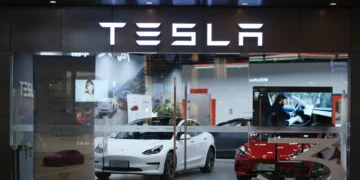Sometimes business owners wish that a day is more than 24 hours; there’s just so much they have to do, and time is never enough.
Especially solopreneurs and early-stage entrepreneurs who are wearing many hats in their organization. There’s always something next to do.
This busy lifestyle can only leave you stressed out and unproductive in the long term, leading to stunted growth in your business.
If you want to increase your productivity and achieve more in less time, you should consider automating repetitive manual tasks. Business automation saves you time and energy. It takes care of the mundane tasks so that you can focus on the most critical tasks.
To help you automate your business in 2025, we’ve compiled a list of relevant business automation statistics for saving time in your business. Keep reading to get incredible insights on the latest automation trends.
Key Insights: The Most Interesting Business Automation Statistics in 2025
- The global Business Process Automation (BPA) market size is expected to grow from USD 9.8 billion in 2020 to USD 19.6 billion by 2026, at a Compound Annual Growth Rate (CAGR) of 12.2% during the forecast period.
- Marketing automation drives a 14.5% increase in sales productivity and a 12.2% reduction in marketing overhead.
- 88% of SMBs say automation allows them to compete with larger companies by enabling them to move faster, close leads quickly, spend less time on busywork, reduce errors, and offer better customer service.
- 52% would rather sit in traffic for two extra hours every day than give up the automation tools that make their life easier.
- 69% of the employees have reported that automation reduces the wastage of time and 59% believe that they would have more than six spare hours per week if repetitive jobs were automated.
- Professionals take 18 minutes on average to locate a document manually––20% to 40% of their time––and spend 50% of their time searching for information.
- Automating social posts and ads can save more than 6 hours per week.
- Automating social posts and ads can save more than 6 hours per week.
Sales Automation Statistics
Contrary to popular belief, multitasking can be counterproductive and costs companies 40% of lost productivity simply due to constant task-switching. (Wrike)
Most people pride themselves on their ability to multitask and do more in less time. In reality, the result of multitasking is always low-quality work. Our brain functions optimally when it’s focused on a particular task. Constant task-switching sends multiple signals to our brain, which breeds weak output.
Professionals take 18 minutes on average to locate a document manually––20% to 40% of their time––and spend 50% of their time searching for information. (Farc Research)
The world is gradually gravitating towards a paperless economy. An economy with more cloud storage devices and fewer document cabinets. Imagine converting 18 minutes spent manually searching for documents into a more productive task, how profitable your business would be?
Digitization and a focus on streamlining business processes are accelerating demand for modern workflow automation management systems, a market forecast to increase from $4.8 billion in 2018 to more than $26 billion in 2025. (Grand View Research)
Business automation applications are beginning to gain wide acceptance across industries due to their role in improving work efficiency and reducing operational costs. As a business owner, seek out ways by which automation can help you save time and increase your productivity.
25% of companies are using AI to screen resumes or job applications. (Gallagher)
The role of a human resource executive is becoming demanding as they’re increasing demand for jobs. They’ll have to sort through many resumes and spend another set of hours scheduling interviews with applicants. However, with AI automation, companies have been able to save hours doing other things.
Small and medium enterprises are expected to adopt business workflow automation on a large scale, creating a market of opportunity of more than US$ 1,600 million between 2017-2026. (Intrado)
As the automation of business processes continues to advance, in their latest research Global News Wires forecasted that most SMEs would adopt business automation, creating a market value of more than $1,600 million.
When it comes to business processes, 60% of occupations could save 30% of their time with automation. Some of these tasks that could save time include generating sales leads, approving paperwork, and processing documents. (Mckinsey)
Business automation is not only boosting employee efficiency but also redefining some job roles. After most job roles have been redefined, employees less time managing the tools that are automating their daily functions.
Market research firm IDC says organizations lose 20 to 30% of revenue every year due to inefficient processes. (Forbes)
Time is an essential factor in business. When a company spends more time on manual routines instead of on income-generating tasks, it leads to a loss of revenue. Inefficient processes can lead to employee fatigue, customer dissatisfaction, and waste of resources.
Currently, 44% of SMB employees say that they’re not highly efficient or productive in their day-to-day work, and 94% say they perform repetitive, time-consuming tasks in their role. (Zapier)
Employees are crying out; business leaders should listen. To perform repetitive manual tasks is not just inefficient but also dull. Automation systems should be adopted to help business productivity, efficiency, and employee morale.
65% of knowledge workers are less stressed at work because they automate manual tasks. (Zapier)
Respondents in a recent survey by Zapier acknowledged that they’re becoming less stressed and more productive due to automating their manual tasks. This survey suggests that workers are now feeling more happy and productive as most of their jobs are being taken care of by automation.
52% of workers would rather sit in traffic for two extra hours every day than give up the automation tools that make their lives easier. (Zapier)
The human brain is wired to seek comfort and avoid stress. The brain triggers the body to prevent any uncomfortable and intimidating situation. That’s why workers say that they would rather stay more extended hours in traffic than give up on the technology that simplifies their work.
MARKETING AUTOMATION SATISTICS
80% of marketing automation users see increased leads, and 77% see increased conversions. (Instapage)
An increase in leads and conversions is an increase in revenue. With marketing automation, marketers can generate more sales and revenue for their organization by automating their basic marketing activities.
88% of SMBs say automation allows them to compete with larger companies by enabling them to move faster, close leads quickly, spend less time on busywork, reduce errors, and offer better customer service. (Zapier)
Ordinarily, most small businesses cannot compete with their larger counterparts due to limited budgets and tools. However, business automation is changing the game; small businesses can now compete with larger firms by adopting systems and processes that transform their work.
Marketing automation drives a 14.5% increase in sales productivity and a 12.2% reduction in marketing overhead. (SessionCam)
An increase in sales productivity and reduced marketing overhead costs are some of the leading marketing automation aims. According to this research, many business owners are reporting a significant in their sales productivity due to automation.
91% of users say marketing automation is “very important” to the overall success of their online marketing activities. (Instapage)
When people see the usefulness of a thing in their lives, they tend to want more of that thing. Marketing automation is one of such valuable tools helping business owners and marketing professionals simplify their work processes.
Automating social posts and ads can save more than 6 hours per week. (Invesp)
This statistic is an eye-opener. Most business owners spend more hours a week on social posts, ads, and normal distracting activities on social media. Imagine being able to save up to 6 hours or more from social posting by simply leveraging work automation.
47% of SMBs use marketing automation software for social media management. (Instapage)
Most small and medium enterprises are reported using marketing automation for their social media and ad management. This helps them save time and energy and enables them to focus on other essential tasks and activities.
74% of respondents said that the technology’s ability to save them time was its most significant benefit. (Mckinsey)
Business automation technology is gradually becoming part of our work lives. It’s transforming our work-life and redefining our idea of time.
Custom automation workflows perform the best out of any type of marketing automation workflow. (Spiralytics)
Custom automation workflows have to do with tailor-made automation for marketing activity. This type of automation tends to perform better because it was created to solve a specific marketing need, which translates well.
The global Business Process Automation (BPA) market size is expected to grow from USD 9.8 billion in 2020 to USD 19.6 billion by 2026, at a Compound Annual Growth Rate (CAGR) of 12.2% during the forecast period. (Markets And Markets)
The global business process automation industry has been growing steadily since 2016, and it is showing no signs of slowing down. The market size is also expected to double between 2020 and 2026. It’s not too late to get started with business automation.
69% of the employees have reported that automation reduces the wastage of time and 59% believe that they would have more than six spare hours per week if repetitive jobs were automated. (Moz)
If you’re looking for more time for yourself and your employees, you should automate your systems and processes. It’s one of the easy ways to save more time for your organization.
EMAIL AUTOMATION STATISTICS
Companies that use automated marketing software to send out emails receive twice the number of leads and 58% more conversions than those that send out email blasts. (Moz)
One of the main benefits of using email automation is that it is fast and timely. Knowing the importance of “striking while it’s hot” in marketing, email automation software helps ensure that your emails are delivered at the right time.
Email automation is the most popular type of marketing automation. (Smart Insights)
Undoubtedly, email automation is the most popular type of marketing automation. Email is one of the main communication channels.
Businesses that automate follow-up emails and outreach campaigns can improve their response rate by 250%. (Entrepreneur)
Follow-up and outreach campaigns are time-sensitive. Your target prospect will tend to respond faster and better when they receive a follow-up email as at when due. According to a Forbes survey, businesses can improve their response rate by automating it.
75% of Email Revenue is generated from Personalized Campaigns. (Moosend)
People like the sound of their names; and to get their attention, you’ll need to mention their names in your emails. Personalized campaigns are generating more significant revenue because they combine the power of automation and human psychology.
Triggered emails result in 8 times more opens and greater earnings than regular bulk emails. (Experian)
Triggered emails are custom automated emails that are delivered to the user after an action has been taken. Whereas bulk emails are mass emails sent directly to an audience. The research shows that triggered emails outperform bulk emails due to their personalization and timeliness.
More than 30% of sales-related activities can be automated. (Mckinsey)
According to recent research by McKinsey, more than 30% of sales-related activities can be automated. This allows the sales representatives to focus their energy on the other 70% and do it excellently well.
Frequent Asked Questions On Business Automation
Some of the most common automated tasks include lead management, social media management, follow-up emails, data entry, inventory distribution & management, and document creation and organization.
Some of the commonly used automation software are Google Workspace, MailChimp, Slack, Twitter, Trello, Facebook Lead Ads, HubSpot, ActiveCampaign, Airtable, and Calendly.
Identify the basic repetitive tasks to automate and start with them. Then build a culture around your organization that embraces automation from top to bottom. You can also start with some free automation tools, some of which are listed in the previous FAQ. Lastly, maintain focus when automating; begin with one task before moving to others.
The statistics listed in this article have outlined several reasons why business is vital for your business and where to start. The main benefit of using automation is to save time. That’s it. It will help you save time to have time for more important things in your business.





























